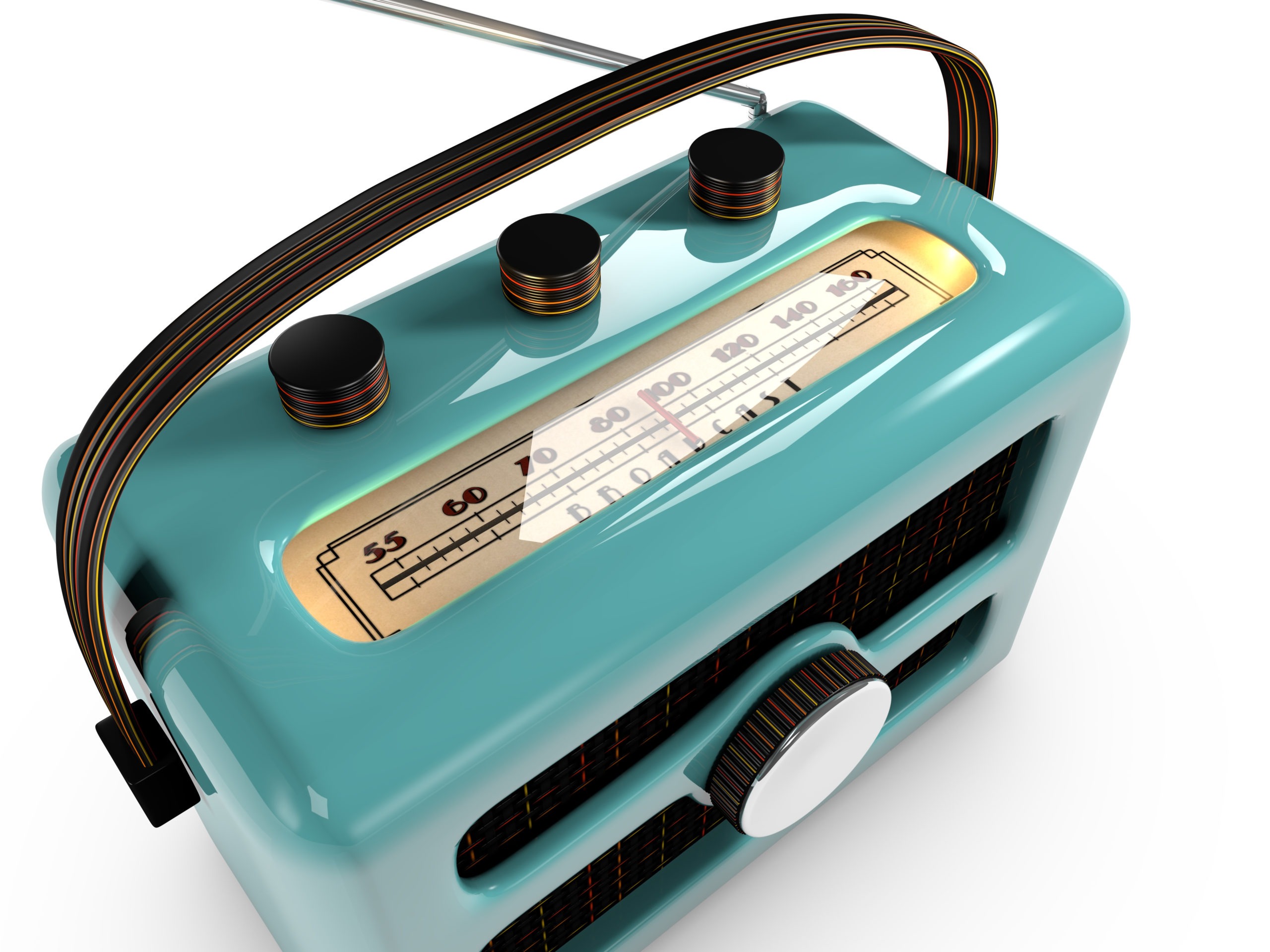
Another Radio Show is in the books. But unlike past years where there was a definite vibe in Charlotte, Dallas, Chicago, or wherever the convention was located, the virtual quality of this annual radio get-together makes it a bit more nebulous to get our arms around.
Did the CEO panel provide clarity or even a pithy quote this year? How were the consultant breakout sessions? Did the personality panel resonate this year? And of course, none of the “side meetings” that have characterized past years took place. No one held court in the bar, and no big deals were announced at the show because of its virtual nature.
This brings into question the value of conventions that aren’t physical. But given the pandemic, they’ve proved to be the next best thing – a chance to come together on our screens to share ideas and information, especially during a time when the old standards are proving to be outdated and largely irrelevant.
That’s why I was pleased the producers of the Radio Show brought back Rishad Tobaccowala to keynote the event for the second year in a row. 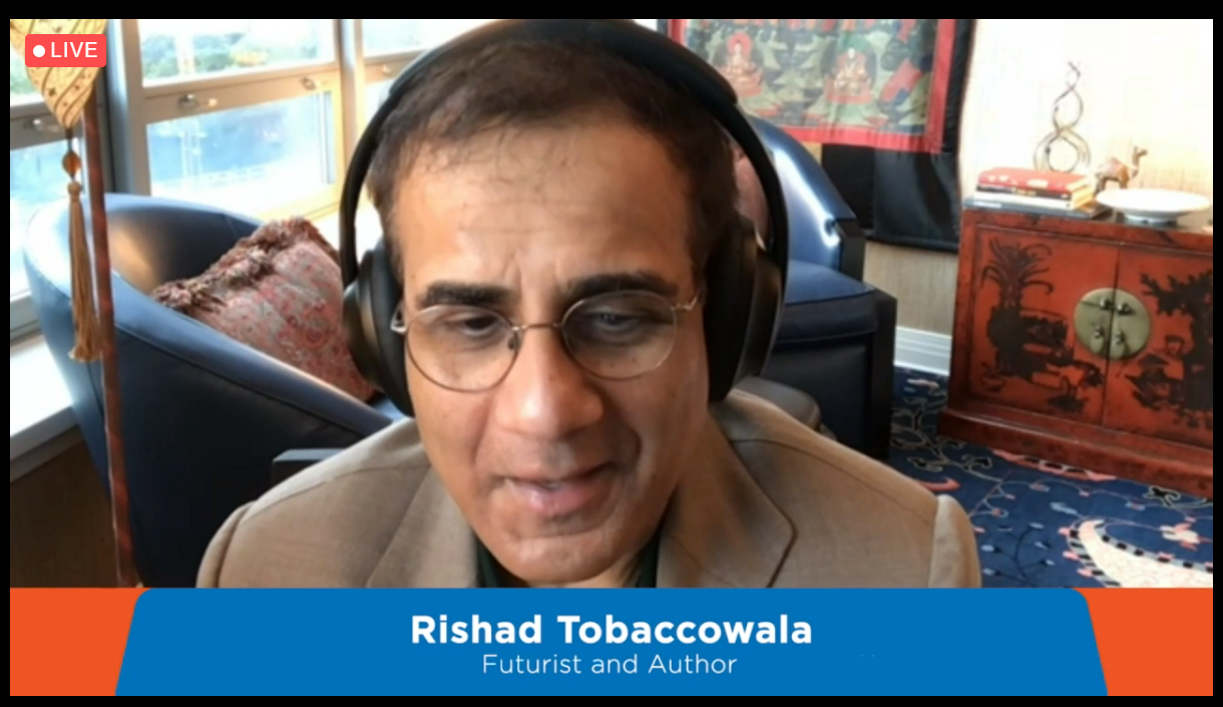 Rishad gave a stimulating, provocative talk in Dallas last year. And he came back with a fresh sense of perspective for these COVID times.
Rishad gave a stimulating, provocative talk in Dallas last year. And he came back with a fresh sense of perspective for these COVID times.
Rishad brings an interesting background and viewpoint to the radio table. As senior advisor and strategist for the Publicis Groupe, he has a unique perspective on where the puck is headed.
Even though he is all about the change that permeates the media landscape, his calm, steady demeanor makes it challenging to take in his words and what they mean to our business and personal lives.
Part of his thesis at the Radio Show was this resonant quote that ought to make our industry stop and think about station content – and its distribution.
“The future doesn’t fit in the containers of the past.”
While there are many industries where this applies, none may be more appropriate than radio. Our reliance on over the air signals, disseminated by towers and transmitters celebrates its 100th anniversary – a time of both accomplishment and wondering “what’s next?” for the medium.
It’s a perfect moment in time in which to reflect on the future, especially during a global health and economic crisis that demands we rethink all our givens.
In our ongoing COVID studies among radio fans this year (we have now completed three “waves”), we continue to learn how these “containers” are changing. Accessing and consuming radio station content via devices that aren’t radios has become more and more common, as consumer lifestyles and work habits have been disrupted by the pandemic.
When we asked commercial radio respondents about how they’ve been listening to their favorite station since the onset of COVID, here’s what they told us just a few weeks ago:
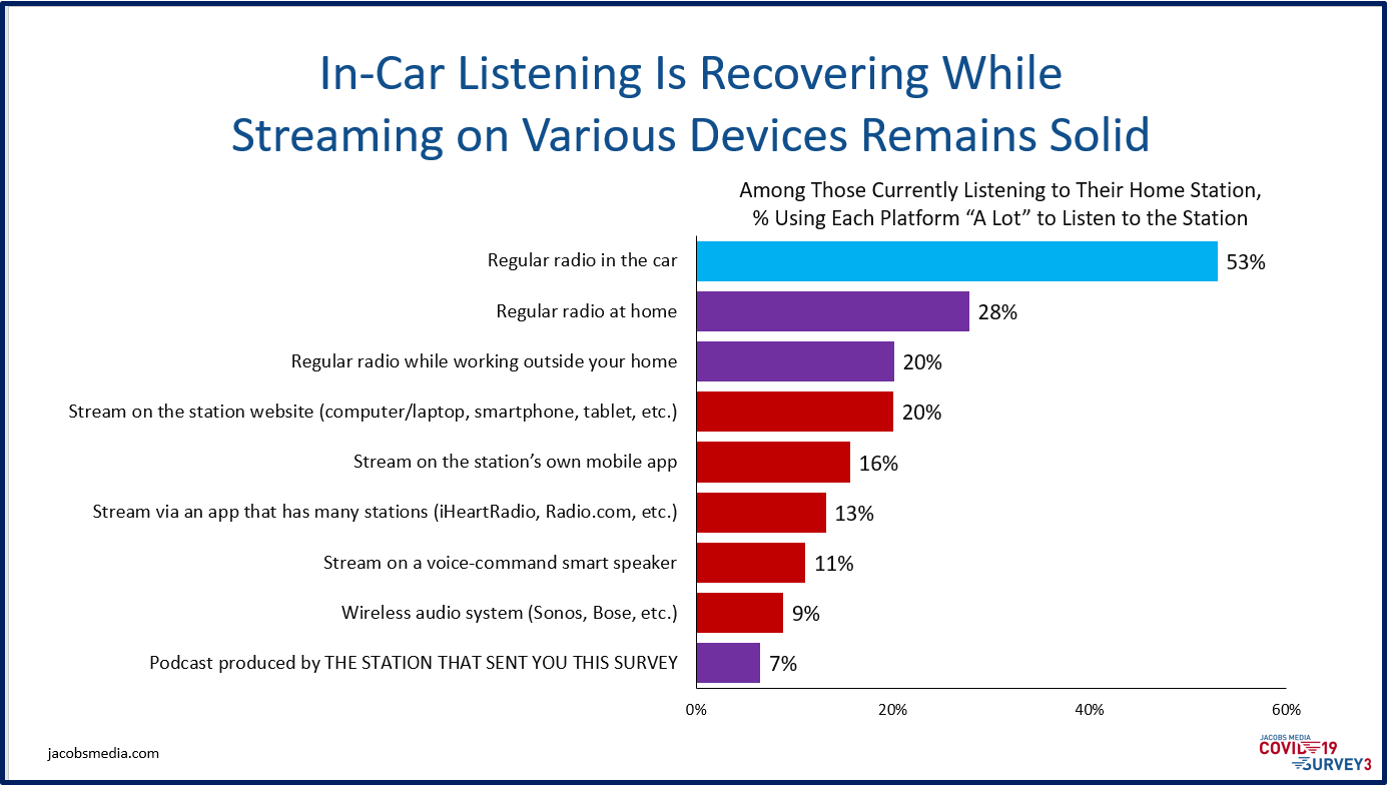
For broadcasters, the good news is that more and more people are back in their cars – the primary place where they listen to morning shows, music sweeps, talk programming, and play-by-play sports. But those red bars illustrate the impact of digital listening on myriad “containers” – computers, smartphones, smart speakers, and other devices.
Our qualitative research clearly shows that more and more people are finding a way to listen to “radio” on available gadgets, wherever they happen to be located. If there’s not a working radio nearby, many have learned how they can find a gadget or device that will do the job.
But we’ve also learned that stations that have invested in these alternative “containers” and taken the time to market them to listeners have a leg up over those who have failed to heed the digital call, or fallen short on communicating the existence of these outlets to station cumers.
Last week, I wrote a post about Apple’s late entry in the smart speaker race – the HomePod Mini. On Twitter, I posted the tweet you see below depicting the drag race between Amazon and Google here in the States. And a reply came in from Corey Dylan, a veteran DJ and media host who made this wise observation:
Whatever device it is, it’s replacing the ‘radio’ in homes. We should probably be giving them away to our listeners to make sure we STAY in their homes? My .02
— COREY DYLAN (@CoreyDylan) October 16, 2020
And of course, SiriusXM and Spotify have done just that – giving away smart speakers (or deeply discounting them) because they know these devices are, in fact, “the containers of the future.” If you trust your content, why wouldn’t you want to invest in the hottest devices around, especially when they’re inexpensive, accessible, and being marketed by the biggest companies in tech: Amazon, Google, and Apple?
I have a feeling they’re going to catch on.

For too many years, broadcasters have taken it for granted their hardware would simply appear – in kitchens, on workbenches, in dashboards, and in the palms of our hands. And much of the time, this courtesy was extended by device makers, car companies, and even brands.
A few years back, I wrote about my visit to veteran Don Curtis’ home in Raleigh, NC. Don has perhaps the world’s largest collection of branded radios – the kinds that everyone from Disney to Coke to Shell Oil used to routinely make as promotional giveaway items – yes, tchotchkes.
Every device you see pictured below is a radio – made, marketed, and distributed by companies that had nothing to do with broadcasting.

The containers of the past.
Thanks to the ubiquity and popularity of radio in those years, it made sense for all sorts of brands to promote themselves with portable AM/FM devices. And Don has thousands of them to prove it.
But in order to ensure its content can be accessed on “containers of the future,” broadcasters will have to be more proactive.
Fortunately, it’s beginning. I recently received an email from Radio.com, Alexa, and the recent Amazon Prime Day. Now that their stations are “Alexa-accessible,” the platform is actively promoting these new “containers” as another way to listen to Entercom stations.
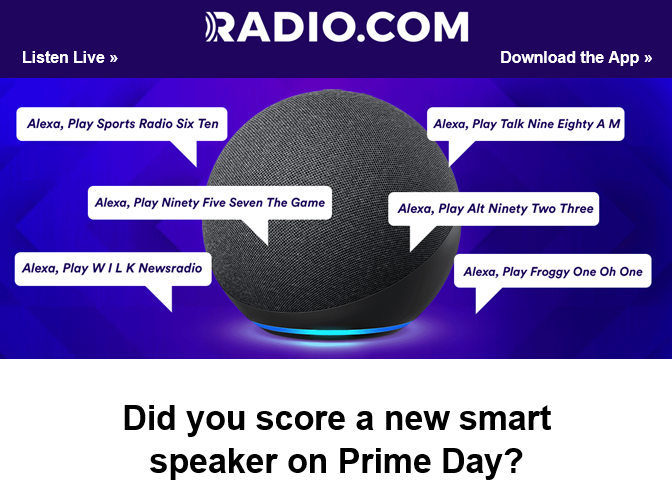 Note, however, Radio.com isn’t giving away these Amazon Echo devices away for free. As Corey Dylan and others in radio opine, “Why not?”
Note, however, Radio.com isn’t giving away these Amazon Echo devices away for free. As Corey Dylan and others in radio opine, “Why not?”
At least the suggestion that consumers should buy one of these devices is a starting point that provides an additional connection point or “new container” to the company’s arsenal of content.
Whether we encourage it – or not – it’s still happening. I reopened our Techsurvey data files, and ran the numbers for the chart below.
It’s among Millennials tracked over the past four years. And it traces the decline of “regular radios” in homes, apartments, and dorm rooms, versus the acquisition of smart speakers over this same time period.
At what point will the “smart speakerization” of our living rooms, kitchens, and bedrooms pass the declining presence of working radios in homes?
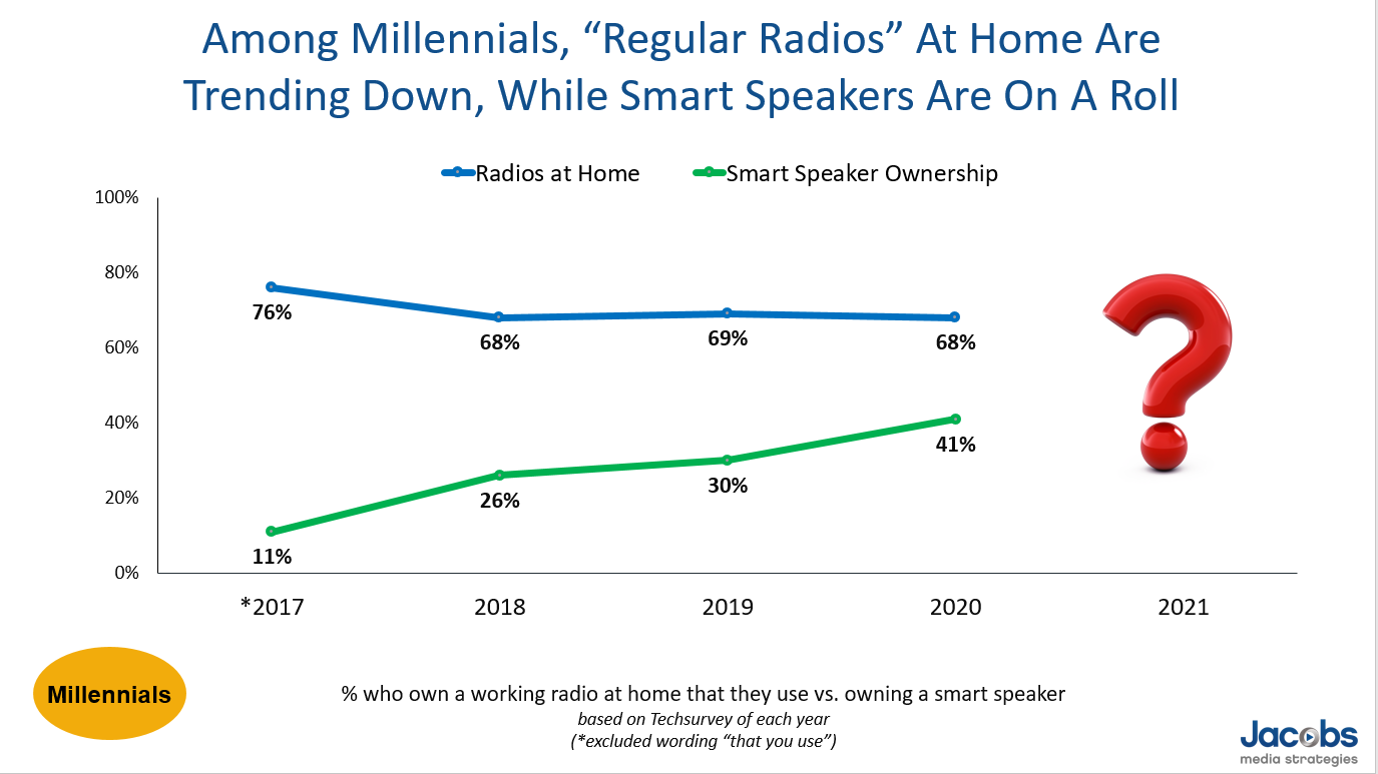
Clearly, the former is rising every year, while the latter has been in decline for years, never to be turned around. You don’t need to fly to Vegas with me and Paul to attend CES to realize this is a trend. Aside from Don Curtis’ house, radio’s “containers of the past” are getting harder to find, much less buy, with each passing year.
And why would consumers want to buy a radio at this point, when all of its programming is available on devices they already own (laptops, tablets, smartphones), or ones they will undoubtedly continue to purchase – like smart speakers – with each passing year?
Radio broadcasters can wait for these lines to cross – and they will – before that industry light bulb goes off. Or we can use this crisis as a moment in time in which to reimagine radio content in sleek new containers that are rapidly finding themselves in homes, workplaces, and even cars.
The average radio station probably mentions its AM or FM “dial position” a dozen times each hour – minimum.
The number of times smart speakers, apps, and streaming are mentioned remain secondary, if not tertiary.
I hope the NAB/RAB invites Rishad back to the Radio Show in 2021, whether it ends up being in the Big Easy as planned, or on one of our screens.
“The containers of the future.”
- What To Do If Your Radio Station Goes Through A Midlife Crisis - April 25, 2025
- A 2020 Lesson?It Could All Be Gone In A Flash - April 24, 2025
- How AI Can Give Radio Personalities More…PERSONALITY - April 23, 2025




On point again, Fred. I’m in the radio industry and I have three hockey pucks (New containers) in the house. Yesterday, Alexa asked me if she was answering from the right room. At least she’s working on it! And yeah, I shelled out the seven bucks a month thinking it was going to get me original performances of songs. Not so! Still the same bad re-recordings by performers who are doing so half a decade later! (Sometimes) I’ll stay with it for now. I do enjoy updates on my Amazon deliveries but I am also still creeped out by that constant live mic however…
The mic that’s always “on” is disconcerting. I remind people our smartphone mics are “on” as well. But some of the early (bad) PR for Alexa has stuck as often happens. Enjoy the convenience of your new “containers.” Thanks for checking in, Ed.
Last thing I want is to sound like a Cassandra, but radio’s competitive advantage is the robustness of its traditional audio chain compared to the relative fragility of the new “containers” that all depend on the internet–which has far more weak links than OTA broadcasting (and really doesn’t even exist properly in vast rural areas of our country that are properly served only by OTA radio). It doesn’t take much to knock out the internet chain, while OTA radio has often survived storms, floods, wildfires, seismic events, all of which are more frequent as development and climate change affect our world. Those new containers are nice, and I love the convenience, but how soon will people find themselves wishing they still had something that works when the fecal matter hits the blades? Harp on that strength, guys.
John, there’s no doubt traditional broadcasting provides the most reliability, especially when we start talking cell towers. But the availability issue is a real one. And when you look at the chart I included of what’s going up – and what’s going down – broadcasters need to be tending to both sides of the distribution equation. The “new containers” have their problems (not to mention that everything is available on them. But as we’re learned from COVID, when consumers are stuck in a location without a working radio, mobile devices and smart speakers are the next best thing. Thanks for the comment & for reading our blog.